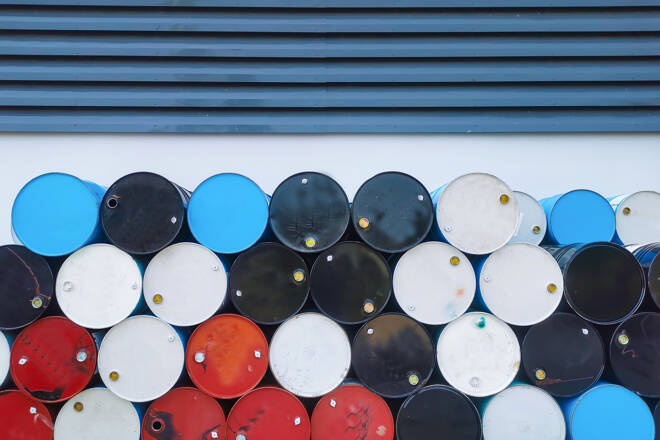Advertisement
Advertisement
Russia Bans Oil Exports To Countries That Support Price Cap
By:
Oil markets continue to move higher as traders bet that Russian oil exports will decline in the upcoming months.
Key Insights
- Russia has finally banned oil exports to countries that participate in the price cap mechanism.
- The decree becomes effective on February 1, 2023.
- WTI oil moved above the $80.50 level as traders reacted to the news.
Russia’s Putin Bans Oil Exports To Countries That Imposed Price Cap
On December 27, Russian President Vladimir Putin signed a decree banning the supply of oil to countries that participate in the oil price cap scheme.
The price cap on Russian oil was set on December 5 at the $60 level by G7 (U.S., UK, Germany, France, Canada, Italy, Japan), EU, and Australia.
The price cap mechanism aims to cut Russia’s oil revenues by banning West-controlled transportation, financial, and insurance services if the price of Russian oil exceeds the price cap.
The price cap scheme had a negative impact on the price of Russian oil in the near term as Russia faced problems with transportation and insurance.
According to Neste, Russia’s Urals oil discount to Brent oil increased from $24 per barrel to $30 per barrel in less than a month. As Brent oil is trading below the $90 level, the current Urals price is below the price cap.
The Ban Will Be Implemented On February 1, 2023
Russia’s ban on supplying oil to countries that participate in the price cap scheme becomes effective on February 1. Interestingly, it will stay effective until July 1, 2023. What happens after July 1, 2023 remains a mystery.
According to the decree, Russia bans supplying oil if the contracts imply using the price cap mechanism, directly or indirectly. It is not clear how this decree will be implemented if the contract itself does not mention the price cap but the buyer is in the country that participates in the price cap scheme.
While Russia’s decree leaves some questions unanswered, oil markets moved to new highs. WTI oil managed to get above the $80.50 level, while Brent oil settled above $85.50.
For a look at all of today’s economic events, check out our economic calendar.
About the Author
Vladimir Zernovauthor
Vladimir is an independent trader, with over 18 years of experience in the financial markets. His expertise spans a wide range of instruments like stocks, futures, forex, indices, and commodities, forecasting both long-term and short-term market movements.
Did you find this article useful?
Latest news and analysis
Advertisement
